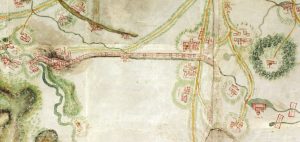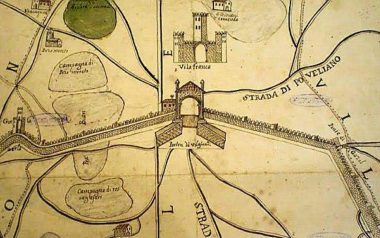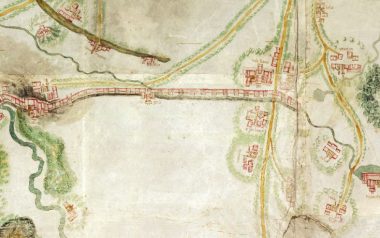Serraglio Scaligeri fortifications
Fortification 16 km long and about 16 meters high to defend the Scaligeri boundaries from the Visconti raids built between the 13th and 14th centuries.
Serraglio Scaligeri fortifications unified in a long defensive line the castle of Valeggio sul Mincio, the little castle of Gherla, the castle of Villafranca di Verona, continuing towards that of Nogarole Rocca, part not completed due to the marshes of Grezzano; this defensive line had about eighty towers along its path and was flanked by the vallo, a ditch about twelve meters wide and three deep that ran along the walls, still visible in some places, as well as most of the base of the wall. In the twelfth century the City of Verona decided that the natural boundaries of Lake Garda, the river Tione and its marshes were not enough to curb the incursions of the nearby Milano and Mantova so first was founded the town of Villafranca and later other castles in Ponti sul Mincio, Valeggio sul Mincio, Custoza and Sona. Subsequently, with Alberto della Scala, from 1284, the castles were first strengthened, adding the fortification of Borghetto and then from 1345, with Mastino II della Scala, the construction of the Seraglio was begun, works suspended from 1349 to 1353 due to the plague and completed by Cangrande II. In Villafranca, the Porton was built opposite the castle, beyond the river Tione, a great access that preceded the south gate of the castle that came in 1359, completed with a square enclosure of high walls and ten towers that surrounded the real castle. own; this fortified area allowed the stationing of hundreds of knights and made of Villafranca the center of the command of the Scaliger Serraglio. With the fall of the Scaligeri the work lost importance but, however, was reinforced by Gian Galeazzo Visconti with the construction of the Visconti bridge and sections of masonry to the castle of Valeggio. In 1404 it was first damaged by the troops of Francesco Gonzaga in operations against the Visconti, sheltered by the Serenissima in 1544 with customs functions and finally demolished by the Austrians in the nineteenth century for the free movement of troops in the Po Valley.



